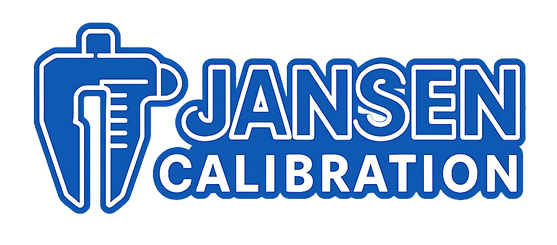No products in the cart.

When it comes to loop calibrators, two names consistently rise to the top: Fluke and Additel. These two brands are renowned for delivering high-precision calibration tools used in process control, instrumentation, and maintenance across industries like oil & gas, power generation, pharmaceuticals, and manufacturing.
But in 2025, with evolving technology and tighter process requirements, how do you choose between Fluke and Additel loop calibrators?
In this comprehensive buying guide, we compare Fluke and Additel loop calibrators side by side—based on accuracy, usability, features, durability, and value for money. Whether you’re upgrading your field tools or building a new calibration lab, this article will help you make an informed decision.
🔎 What Is a Loop Calibrator and Why It Matters
A loop calibrator is an essential tool for calibrating, simulating, and measuring current loops (typically 4–20 mA) used in transmitters, PLCs, controllers, and other instrumentation. A reliable loop calibrator ensures:
Accurate system readings
Faster troubleshooting
Reduced downtime
Compliance with industry regulations
Explore our full Process Instruments catalog for more calibration solutions designed for field and lab applications.
🏆 The Contenders: Fluke vs Additel in 2025
Both Fluke and Additel are leading brands, but they cater to slightly different preferences in the field.
| Brand | Known For | Ideal For |
|---|---|---|
| Fluke | Rugged, field-proven reliability | Technicians needing rock-solid tools |
| Additel | Innovation, precision, and automation | Professionals seeking advanced features and documentation capabilities |
⚙️ Feature Comparison: Fluke vs Additel Loop Calibrators
Let’s break it down by key aspects:
1. Accuracy & Performance
Fluke 709H Precision Loop Calibrator:
±0.01% reading accuracy, built-in HART communication, simple interface.
Great for precise but straightforward calibrations.Additel 209 / Additel 210:
±0.015% FS (209), ±0.01% FS (210) accuracy, voltage/mA sourcing, auto-stepping, and ramping.
Higher-end models like Additel 227 include HART simulation and full documenting capabilities.
Verdict: Additel edges ahead in precision and automation for more demanding applications.
2. User Interface & Ease of Use
Fluke offers simple rotary knob navigation, backlit displays, and intuitive operation—ideal for technicians used to Fluke’s ecosystem.
Additel integrates color displays, touchscreen interfaces (on models like ADT227), and user-friendly menus for fast multi-function use.
Verdict: Additel wins on modern interface, while Fluke remains king for straightforward, rugged usability.
3. HART Communication Capabilities
Fluke 709H supports basic HART read/write functions, enough for most common field applications.
Additel 227 offers more comprehensive HART diagnostics and configurations with documenting calibration functionality.
Related Article: How to Calibrate a Pressure Transmitter Using a Loop Calibrator
4. Durability & Field Use
Fluke tools are built for harsh industrial environments—IP-rated enclosures, shock resistance, and long battery life.
Additel is also rugged but leans toward advanced lab-field hybrid tools with more delicate screens and higher precision parts.
Verdict: Fluke is the best pick for tough fieldwork; Additel is better suited for clean industrial or controlled environments.
5. Price and Value for Money
Fluke 709H: Excellent price-to-performance ratio; simple yet precise.
Ideal for plants with multiple units and tight budgets.Additel ADT210/ADT227: Higher upfront cost but offers automation, documenting features, and connectivity.
Verdict:
Choose Fluke for cost-effective accuracy and reliability.
Choose Additel for long-term value through advanced features and efficiency.
🧰 Use Case Scenarios
| Application | Recommended Brand | Model Suggestion |
|---|---|---|
| Field calibration of pressure transmitters | Fluke | Fluke 709H |
| Multi-signal calibration lab setup | Additel | Additel 227 Documenting Calibrator |
| HART-compatible process control | Additel or Fluke | Fluke 709H or Additel 210/227 |
| Budget-friendly routine checks | Fluke | Fluke 707 or 709 |
Looking for more? Browse our category of Loop Calibrators for the latest models and specifications.
🔧 Accessories and Compatibility
Both brands offer essential accessories like:
HART lead sets
Pressure modules (especially for Additel)
USB communication cables
Carrying cases and rugged holsters
Make sure to match your loop calibrator with compatible process instruments—check out Pressure Measurement Tools and Temperature Measurement to complete your toolkit.
📦 Fluke vs Additel: Summary Comparison Table
| Feature | Fluke 709H | Additel 227 |
|---|---|---|
| Accuracy | ±0.01% Reading | ±0.01% FS |
| HART Support | Basic | Advanced (Full HART Capabilities) |
| Interface | Rotary + Display | Touchscreen Color Display |
| Durability | High (Field Use) | High (Lab/Field Hybrid) |
| Documentation | Manual | Built-in Documenting Functionality |
| Price Range | Mid | High |
📝 Final Thoughts: Which One Should You Buy in 2025?
Both Fluke and Additel offer outstanding loop calibrators, but your ideal choice depends on your calibration workload, environment, and need for automation.
Choose Fluke if you:
Need rugged, no-frills tools
Prefer straightforward calibration without digital complexity
Want excellent reliability for a reasonable cost
Choose Additel if you:
Want full-featured, touchscreen-based documentation
Require precise control and automation for large-scale calibration tasks
Work in both lab and field environments
